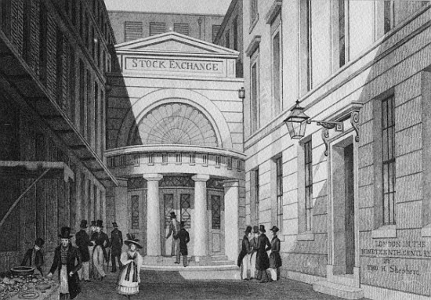According to many historians, the Industrial Revolution orindustrialisation of Great Britain began shortly after 1750. Several factors, present at the same time in Great Britain, encouraged the country's industrial development.

Note: English image coming soon
There are six main reasons why industrialisation is possible in Britain.
- The presence of capital
- The importance of colonies
- New technologies
- The presence of coal
- Efficient agriculture
- The abundance of labour
With the colonial trade, British businessmen, most of whom belonged to the bourgeois social class, accumulated astronomical amounts of capital (money). However, even greater sums were needed to invest in building factories. So some of them got together to form modern banks to obtain the money needed to industrialise the country. Later, another economic tool would enable English companies to continue industrialising: the stock market. Like the banks, the stock market enabled companies to raise capital that could then be reinvested in their factories.


The British colonies
Note: English image coming soon
From their very beginnings, and right up to the arrival of the first British factories, the colonies served a dual purpose:
- they provided natural resources for British factories
- they became markets for goods produced in Great Britain.

The steam engine

The locomotive

The Jenny Mule
The 18th century was marked by all kinds of technical innovations. Some were effective, others less so. The most important was the steam engine, which James Watt, with the help of an English businessman, perfected after 1765. Watt's machine served as a self-contained engine, and at the same time powered complex, high-performance machines for use in factories and for transport.
The arrival of coal as a new source of energy was to turn many fields upside down, since the energy produced was more powerful than the energy sources used previously. The method of purifying coal was invented in 1709. It was then possible to obtain pure carbon. This new technique made it possible to create blast furnaces that could reach very high temperatures.
Great Britain also had large quantities of coal mines on its own territory. Having this resource nearby gives the country a great deal of autonomy when it comes to locating plants. In fact, the areas of the UK that are being industrialised correspond to the regions where the coal mines are located. This gives easy access to the resource, while reducing the cost of transporting it. This phenomenon is illustrated on the map of Great Britain at the beginning of this fact sheet.
For many historians, agriculture underwent a veritable revolution towards the end of the 17th century, between 1680 and 1720 in particular. Technical innovations made it easier to clear land and drain marshes. These innovations also improved the ability to feed people and livestock. New fertilisers increased agricultural production, and crop rotation replaced the practice of letting land lie fallow.

Crop rotation

A threshing machine

Fenced land
At the same time, agricultural machinery was developing. All the farmer's tasks were now mechanised. This is why we say that the farmer is now a farm labourer.
However, these changes in farming practices had their own set of consequences for rural life. Farm labourers now had to buy their land, and since it was now more productive and required less work, some people saw it as an attractive investment. This led to the emergence of large landowners who took advantage of these developments to enrich themselves. The large landowners buy the land that the peasants cannot pay for.
In addition to these land purchases, the law on enclosures forced peasants to leave the countryside. This rural exodus led to the development of towns and cities (urbanisation), as people headed for them to find a new source of income.
The law on enclosures allows wealthy landowners to fence off the land, forests and commons that farmers, who are generally poor, use to feed their livestock. As the poorest could no longer use this land, many of them had to give up livestock farming because they no longer had the space to feed their animals. This law on enclosures deprived farmers not only of food, but also of a major source of income from their animals (milk, meat, leather, wool, etc.).
With demographic growth (population increase) and the rural exodus (movement of peasants from the countryside to the towns), factories near industrial towns received the labour they needed and more. The fact that workers were plentiful and available gave the industrialists a strong position, with very poor working conditions. The Scottish clearances (expulsions from their land) were a case in point, as they were forced to travel to English cities in search of work.